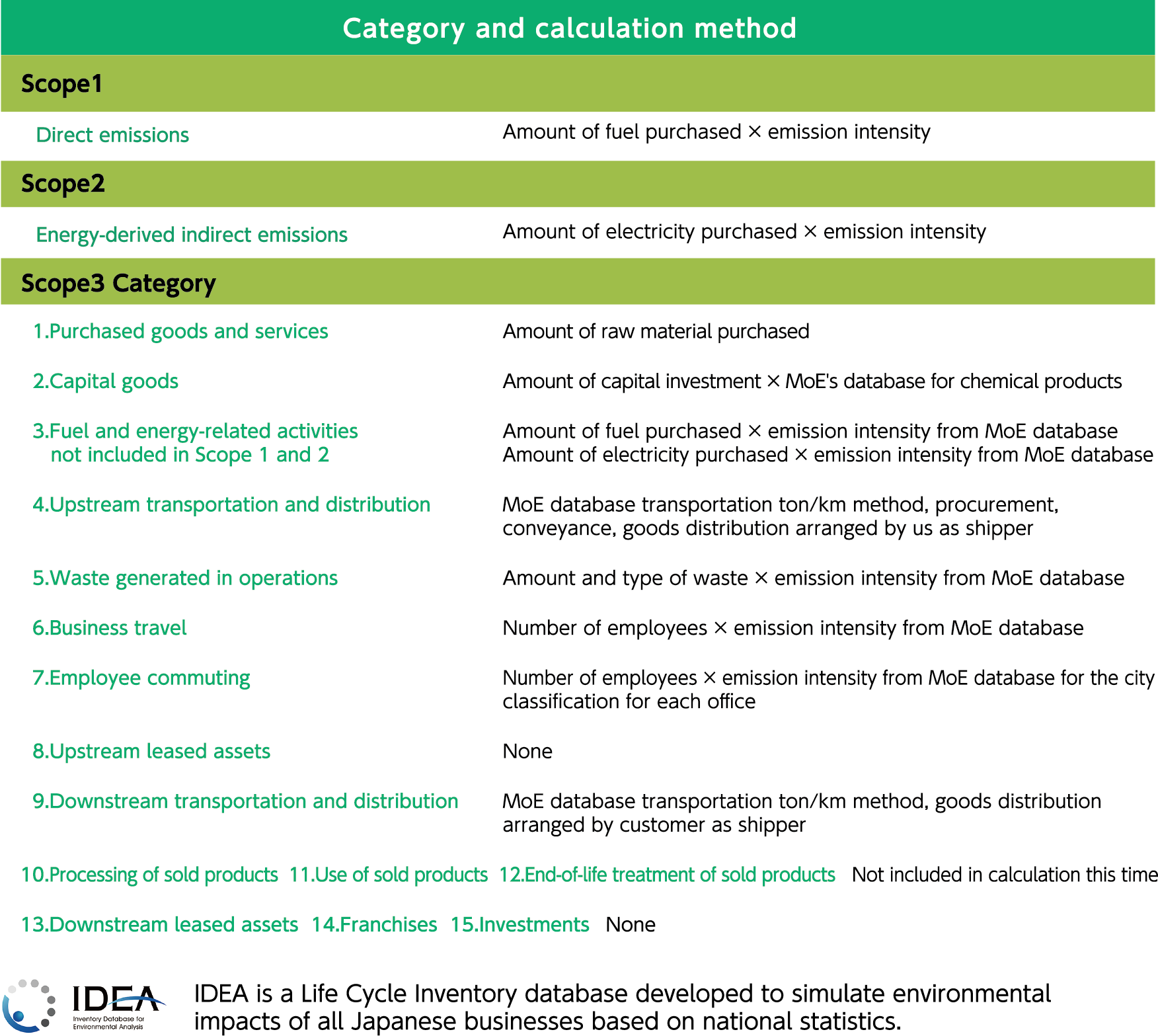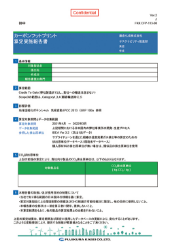Contributing to a Decarbonized Society
At Fujikura Kasei, we recognize our responsibility to address climate change as a management issue and engage in assessing greenhouse gas emissions from throughout our supply chain.
We also strive to ensure proper disclosure in line with the international reporting framework of the Task Force on Climate-related Financial Disclosures (TCFD) while making an active contribution to reducing greenhouse gases.
The climate change issue and our responsibility
Responding to global-scale climate change is one of the goals of the Sustainable Development Goals (SDGs) which is being a ddressed t hroughout t he w orld s ince t he P aris Agreement entered into force in November 2016. In October 2020, Japan pledged to achieve carbon neutrality by 2050, and responding to climate change has thereafter taken on increasing importance.
For our part, we are taking initiatives to reduce greenhouse gas emissions based o n the awareness that we h ave an important social responsibility as a c ompany to address climate change. As we have reported in our CSR Reports, we have h eretofore kept o n top o f CO₂ e missions f rom o ur business a ctivities p ursuant to t he Act o n Promotion o f Global Warming Countermeasures. We have also made ongoing e fforts t o p romote t he e fficient u tilization a nd reduction of fuels and electricity based on the Eco Vision medium t o l ong-term e nvironmental t argets we h ave established independently.
Calculating and assessing greenhouse gases within the entire supply chain
The GHG Protocol provides international standards for calculating and reporting emissions of CO₂ and other greenhouse gases. It emphasizes emissions (indirect emissions) in the entire supply chain, from upstream to downstream, and sets forth standards by which they should be calculated and reported (see Table 1). We have documented our carbon footprint calculation method in line with the “Basic guidelines for calculation of greenhouse gas emissions from supply chains (ver. 2.5)” issued by the Ministry of the Environment and Ministry of Economy, Trade and Industry in March 2023 and commenced its operation with the approval of our relevant directors. We will revise it as necessary and strive to expand the scope of calculation and increase calculation accuracy.

Table 1. Greenhouse gas calculation method for the entire supply chain

Commencement of efforts to acquire primary data from relevant business partners
While European companies have already made significant progress in providing relatively prompt information, many domestic companies are still in the process of establishing or have not yet begun to establish the necessary systems, and their responses largely vary depending on company size and industry. Furthermore, some companies require the submission of memorandums or the signing of confidentiality agreements, which prolongs the data collection process. Despite this situation, our company actively seeks to collect primary data to enhance the accuracy of CO₂ calculations.
Calculating carbon footprint
We believe that achieving carbon neutrality requires not only the efforts of individual companies but also the reduction of greenhouse gas emissions throughout the entire supply chain. As an intermediate product manufacturer positioned between upstream and downstream in the supply chain, our company has established a system to visualize the carbon footprint (CFP) of individual products. This is to contribute to the creation of a market where decarbonized and low-carbon products are chosen.
Definition of carbon footprint
Carbon footprint is defined as“ the amount of greenhouse gas emissions associated with a particular product or system calculated according to a Life Cycle Assessment of impacts on climate change, minus amounts that have been removed or a bsorbed, and converted to CO₂ equivalent emissions.”
It is an indicator of the total amount of greenhouse gases emitted from each stage of a product’s life cycle, from the procurement of raw materials to production, distribution & sales, utilization & maintenance management, and disposal & recycling of the product, minus amounts that have been removed or absorbed.
(Cited from Ministry of Economy, Trade a nd Industry, “Carbon Footprint Report”)

Method of calculating carbon footprint (policy adopted by Fujikura Kasei)
At Fujikura Kasei, carbon footprint is calculated according to the following policy.
| Scope1,Scope2 |
|
|---|---|
| Scope3 Category1 |
|
| Scope 3 Categories 3 to 5 |
|
Scope of calculating carbon footprint (policy adopted by Fujikura Kasei)
As a manufacturer of intermediate materials, Fujikura Kasei adopts the“ Cradle to Gate” concept with regard to the scope of carbon footprint calculation.
The scope of calculation is based on the Pathfinder Framework issued by the World Business Council for Sustainable Development (WBCSD).
Carbon footprint reporting forms
Amid an acceleration of initiatives to reduce g reenhouse gases, customer demand for reports concerning product CO₂ emissions is increasing.
At Fujikura Kasei, we have established reporting forms so we may respond precisely and promptly to diverse requests from our customers. We have prepared two types of reports: the “Scope 1 and Scope 2 CO₂ Emissions Calculation Report for Product Manufacturing” and the “Carbon Footprint Calculation Report.”

Creating new value from climate change measures
At Fujikura Kasei, we recognize our responsibility to address climate change as a management issue. In May 2023, we expressed our agreement with the Task Force on Climate-related Financial Disclosures (TCFD) and conducted a stand-alone scenario analysis based on TCFD recommendations.
In addition to pursuing the reduction of greenhouse gases associated with our products, we also seek to contribute to reducing greenhouse gases by working together with our customers so our products may be applied to new technologies and new fields. By taking climate change measures as an opportunity to create i nnovative value, we w ill p romote proactive R&D and innovation efforts and aim to realize a sustainable society.